Your cart is currently empty!
Category: Raising Chicks
-
Not Ready to Grow Up

The first snow of the season has adorned the surrounding foothills. I could see it yesterday through the clouds hiding the mountains. Today with the clouds gone, the snow covered hills glistened in the bright sun.

Two nights ago, Buttercup finally took her chicks up on the roost. Past two months old, it’s late for them to make the move, but they’re not entirely ready to accept that they aren’t babies anymore. Different ones keep hopping on her back, not wanting to grow up. When they are fully grown, will they look back and fondly remember the nights they spent on their mother’s back?

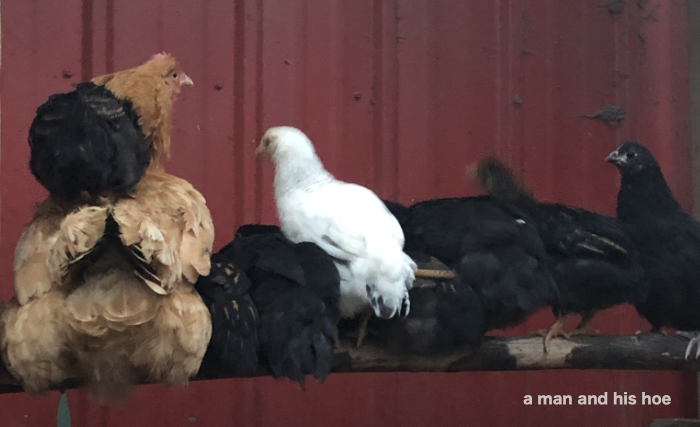
-

After making a tofu delivery this morning, we ran into a flock of swans on the outskirts of Mount Vernon. Swans and snow geese have arrived in large numbers and are settling in for the winter. Both birds are very vocal, and when you stop and listen to them, you wonder what they are talking about all day long.
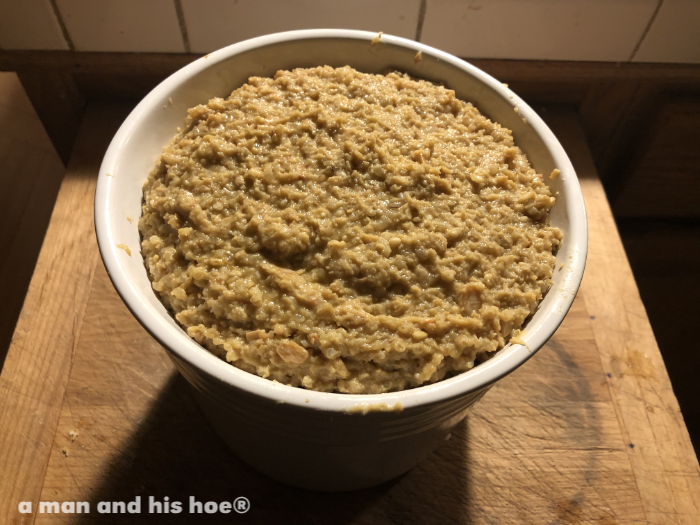
This is my fourth year at making miso 味噌. It’s a relaxing process, soaking and gently cooking the soybeans. They need to simmer for four to five hours until they are as soft as clouds, and it takes just the lightest touch to squish them. This batch is half soybeans and half brown rice. I made such a batch last year and it was so good I want plenty more of it next year.
All that is left after labeling it is to put a lid and a stone on top of it, and wait, and wait, and wait, and wait. Six to eight months from now, it will be done.
The characters for miso 味噌 are interesting. The first one 味 means flavor. The second one 噌 means noisy or boisterous. It’s a fitting way to describe miso as it does have a very loud flavor. I guess I’d have a lot to yell about too if I was kept in a crock for eight months.
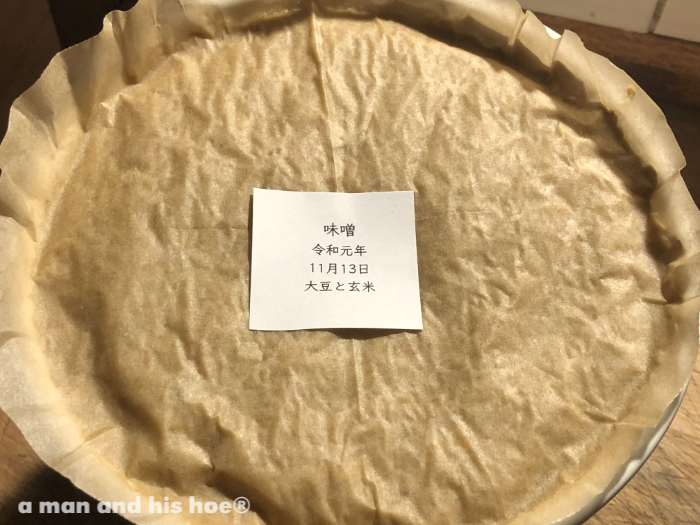


Each mother hen is full of surprises. Butter Ball starting raising her brood on September 18 when they arrived in the mail and I put them under her. They are two months old now and still dutifully following her around, and she is still mothering them. Two months is on the long side for a hen to rear her young. Every mother I’ve had before has had her chicks up on the roost by now, but not Butter Ball. At night, she and her brood still bed down in a corner of the chicken coop, some on top of her.
The one thing I did differently with her this time is that I kept her and her chicks separate from the other chickens for an entire month. Maybe because of that, they have bonded so much.
She is a remarkable mother hen. I’ll try keeping future hens and their broods away from the flock again and see if it really makes a difference.
-
Babies Galore

There are four hens raising nearly 50 chicks. Three of the hens are raising chicks I purchased from a hatchery. A broody hen is a chance to rear a new variety of hen to increase the variety of eggs. I order the chicks so they ship on a Monday, which means I can be at our local Post Office at six Wednesday morning, to get the chicks home as soon as they get unloaded off the truck.
In the past, I’ve waited for the post master’s early morning call before leaving to get them. This Wednesday, I knew from the texts I was getting from the US Postal Service, that the chicks were on their way to the Bow Post Office before I woke up Wednesday morning. I got to the Post Office before the truck pulled in to deliver Wednesday’s mail. When the post master called to let me know my chicks were in, I was knocking on her door in less than minute.
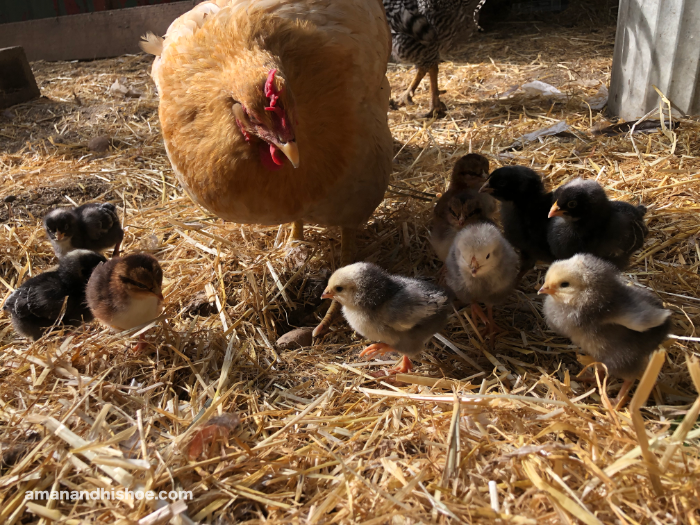
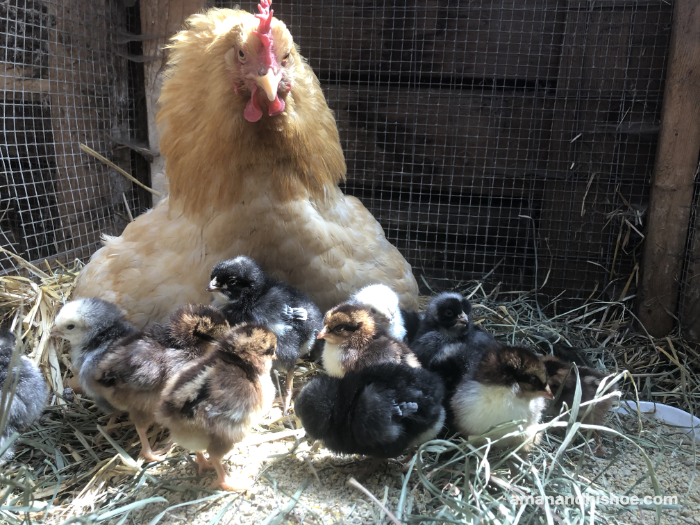
So how does it work putting hatchery chicks under a broody hen? Pretty well, provided you have more than one hen to use, in case a hen doesn’t take to the chicks. The first day can be pandemonium. Two day old chicks can walk a long way, and it works best if the broody hens are in an enclosure so the chicks can’t go too far. I find I may have to show the chicks a few times that there is a warm, secure place underneath their new mother.

I had four broody hens to try, and two of them took to the chicks I received Wednesday morning.


When the sun sets and gets cool, the chicks gravitate under their new mother’s warm feathers, and after one peaceful night resting underneath her warmth, the bond between the chicks and their new mother is set, and the following day, it’s as if the chicks were hatched by her. I kept the two hens and their chicks in enclosures until Friday afternoon, when they were bonded enough to let them out.
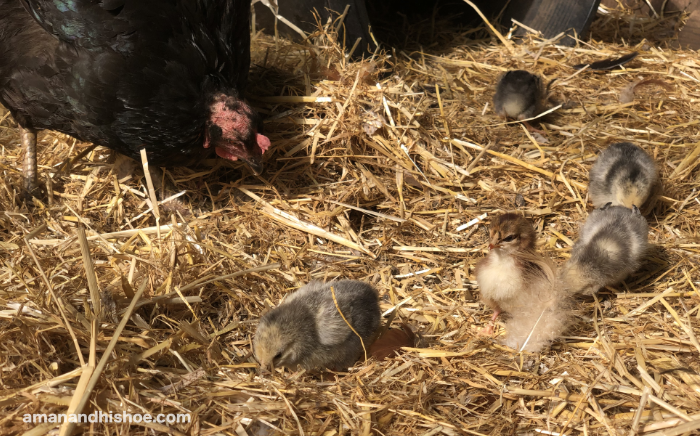
Having mother hens to raise chicks sure makes it easy. No heat lamps to fuss with. No checking on the chicks every hour to make sure they are OK. And a mother hen will carefully take the chicks outdoors so they can learn how to dig for earthworms, catch bugs, and enjoy the sunshine.
A downside to mother hen reared chicks is that they are on the wild side. She raises them to be chickens and not pets. “Watch out for that one,” she tells them if I get too close. But hearing their happy chirps at having a mother is worth it.
This year I’ve added Welsummer, Columbian Wyandoote, Cuckoo Maran, and Speckled Sussex chicks to the flock.
-
Gentle Farming
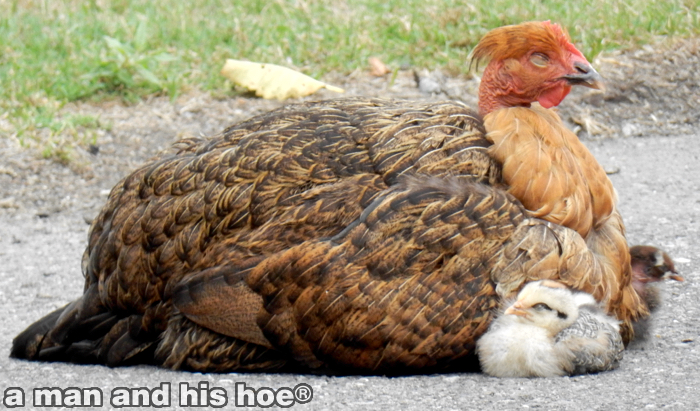
It was Wednesday afternoon, a warm, sunny day. I don’t know who was needing a nap more, Hazel or her chicks. Snoozing next to or inside their mother’s feathers is what little chicks are meant to do. One day, some of her chicks will be doing the same with their own. This is what gentle farming is about. Not rushing things. Letting plants and animals grow at their own pace, do their own thing, and enjoy their lives.
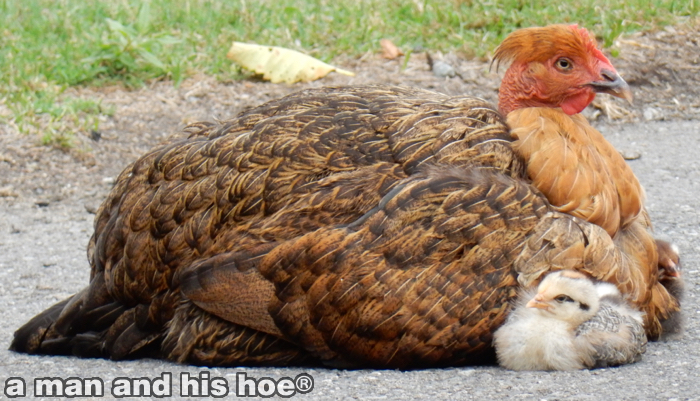
-
A Mother’s Resolve
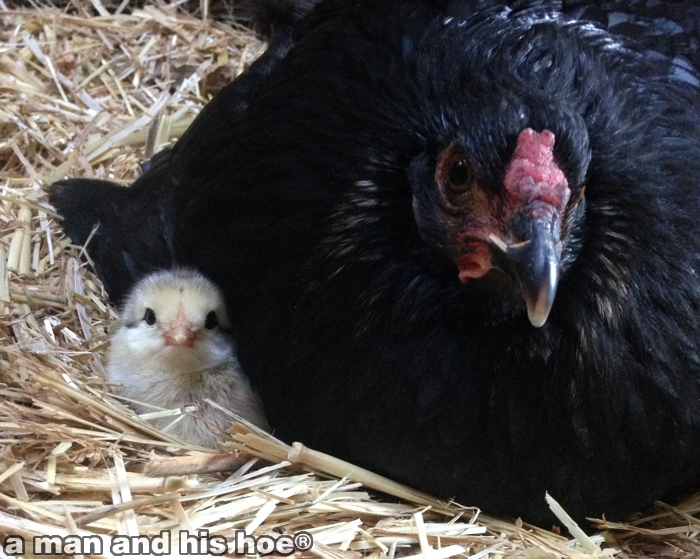
Margaret’s intentions are clear. She is determined to keep her chicks safe. Tomorrow, her chicks will be three days old and we’ll open her nursery so she can show the world to her chicks.